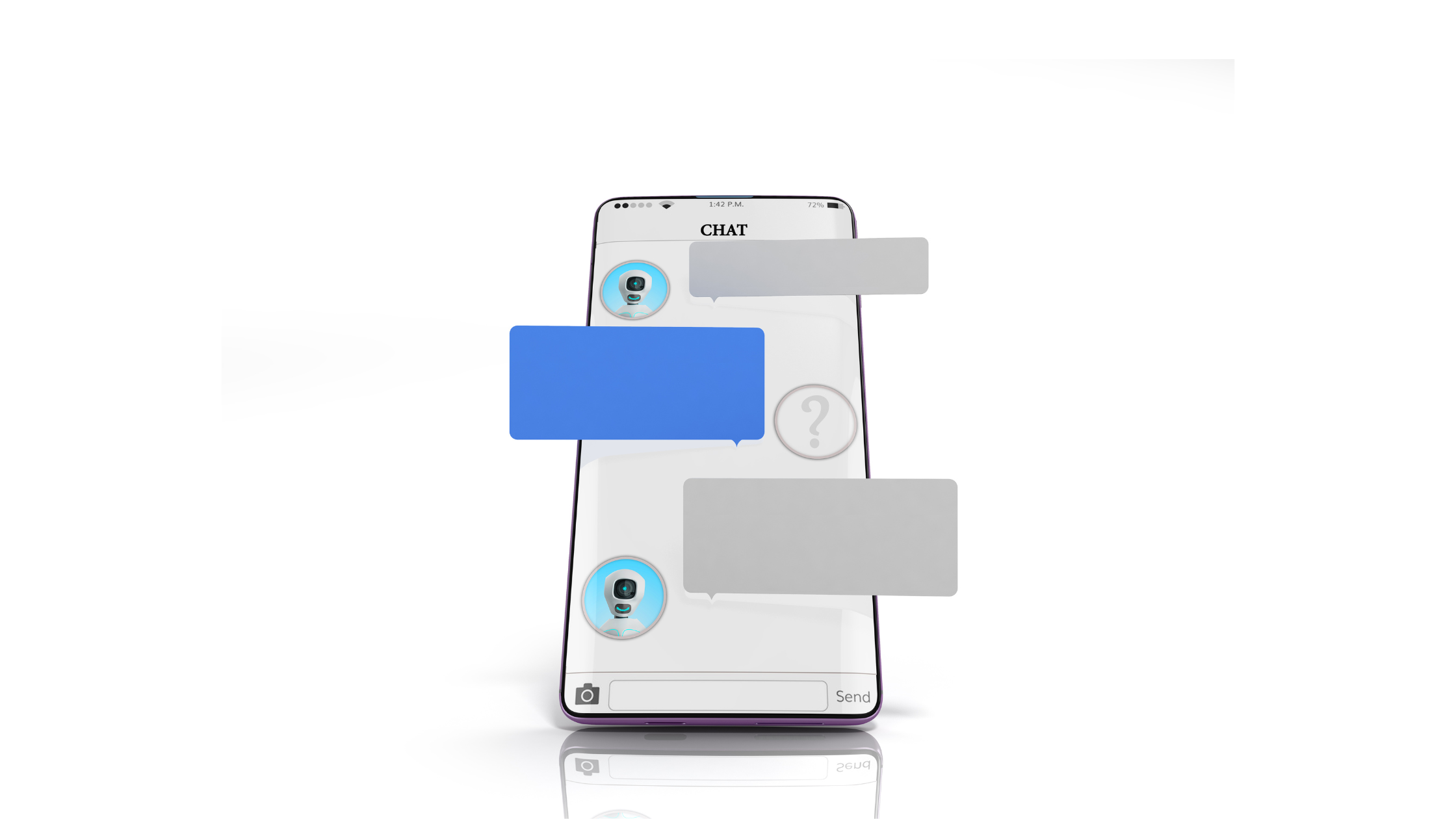From deciding what functions the chatbot will take on to continuously testing and adjusting the chatbot, here are 10 answers to the question, “What are your best tips for how to approach a Chatbot marketing strategy for direct-to-customer (DTC) brands?”
- Decide Early On Primary Functions Chatbots Will Execute
- Chatbots Can Collect Data to Refine Marketing Campaigns
- Do Not Overwrite
- Ensure Your Chatbots Are Easy to Find and Informative
- Be Creative
- Have Chatbots On All the Key Pages of the Site
- Work Out a Transition from Chatbot to An Actual Person
- Always Start With a Strong Hook
- Map Out the Customer Journey
- Continuously Test The Chatbot and Make Adjustments
Decide Early On Primary Functions Chatbots Will Execute
Determine early on what primary functions you want your chatbots to perform. Many brands use their chatbots exclusively to bolster their customer support capacity, but there are many other uses to consider. For example, chatbots are sophisticated enough to make cross-selling and upselling suggestions to users browsing your website.
Suppose business owners leverage this AI to increase product awareness and marketing capacity. In that case, they can also record and track the data chatbots collect from users to make these suggestions more and more effective. Chatbots are best used to strengthen customer support efforts and improve marketing through brand reputation and responsiveness.
Zach Goldstein, CEO and Founder, Public Rec
Chatbots Can Collect Data to Refine Marketing Campaigns
Businesses can train a chatbot to gather data on a customer’s preferences, past purchases, and browsing history. This data can tailor the customer’s experience and make personalized product recommendations. Additionally, the chatbot can be programmed to automatically send personalized follow-up messages, such as abandoned cart reminders or customized discounts.
Another approach could be using the chatbot to create an interactive and engaging customer experience. This could include incorporating games, quizzes, or other interactive elements into the chatbot’s conversation flow.
Chatbots create a more seamless and convenient customer experience. For instance, if the chatbot knows that a customer always orders the same product or has a history of buying products from a specific category, it can automatically suggest that product or category when the customer starts a new conversation.
Ubaldo Perez, Founder and CEO, Hush
Do Not Overwrite
When crafting your chatbot messages, make sure they aren’t too long. People may feel inclined to opt out of interacting with your chatbot if there is too much to read. If you are trying to relay more information, you can include a link or offer a free consultation.
Drew Sherman, Director of Marketing and Communications, Carvaygo
Ensure Your Chatbots Are Easy to Find and Informative
When it comes to chatbot marketing for DTC brands, the best approach is to ensure that your chatbots are easy to find and informative. As users navigate your website or apply for subscriptions, make sure your chatbot is easy to access, easy to understand, and offers helpful information quickly. It’s also important that you use relevant keywords in the conversations users have with your chatbot so customers can get the most up-to-date information about products and services.
Utilizing a high-quality customer service platform to optimize the user experience can also help increase brand loyalty. Tailor conversations to each customer’s needs so they have their questions answered without ever leaving your site.
Jim Campbell, Owner, Camp Media
Be Creative
When it comes to chatbot marketing strategy, the best thing you can do is get creative. Whether you’re using a service like Interactives.ai or building your own chatbot from scratch, you’ll want to make sure you’re coming up with engaging and interactive content that will keep your customers coming back for more.
One of the best ways to do this is by getting creative with your chatbot’s personality. For example, if you’re building a direct-to-customer chatbot, you can take inspiration from Amazon Alexa. Alexa gets creative with its chatbot’s personality by creating holiday-themed content like Halloween costumes and Black Friday deals.
Luciano Colos, Founder and CEO, PitchGrade
Have Chatbots On All the Key Pages of the Site
Chatbots automate interactions with prospects and customers. For the best and most effective use of the chatbot, put it on all the key pages of the site. That way, whenever a customer needs to talk to a customer executive, they won’t have to go back to the home page or look for the chat option on all the pages.
Many websites are using this method for effective marketing for direct-to-customer brands. Add a chatbot to the pricing page, demo page, blog section page, and any other pages you think are important for your website and customers will likely visit. But don’t make the chatbot visible on all the pages. It should appear like a pop-up and have the option to minimize it. This is for the convenience of the website visitor, so it won’t cover content and customers won’t get irritated.
Yogesh Kumar, Digital Marketing Manager, Technource
Work Out a Transition from Chatbot to An Actual Person
Chatbots are a great marketing tool to use for your DTC brand. They can take a lot of the legwork out of the process and can automate many processes that will make things easier, and also provide a much more consistent strategy to consumers. One thing that can quickly turn the ease of chatbots into frustrations on the consumer’s end is when it comes to actually speaking with someone.
Sometimes, a consumer will still want to speak with someone because of an issue, to get additional information about something, or whatever else it may be. Companies need to understand how to make this transition and implement it in their marketing strategy. Figure out the time when a chatbot conversation is transitioned to an actual person.
Make it as easy as you can and prioritize it because that transition could cause issues if you don’t implement it.
Shaun Connell, Founder and CEO, Credit Building Tips
Always Start With a Strong Hook
Always start with a strong hook. A great way to do this is by asking a question that’s relatable to your audience, like “Are you looking to market your direct-to-consumer (DTC) brand?” or “What are the best strategies for chatbot marketing?” This will make it easier for them to engage with and understand your message. When this first step is done correctly, you can then move on to developing a comprehensive chatbot marketing strategy.
Yusuf Shurbaji, Co-founder and Managing Partner, Prismfly
Map Out the Customer Journey
Prioritize customer experience! Start by mapping out the customer journey. Ask yourself, how many interaction points do customers have with your DTC brand? What is the consumer journey from first touchpoint to purchase and post-purchase feedback?
Establishing this map is an essential step before implementing chatbot technology because it will better inform your chatbot flow and help make sure that conversations between consumers and chatbots are intuitive and generate results.
Once you have that mapped out, use AI technology to power your chatbot so it accurately answers inquiries from consumers quickly-something customers highly value. If done correctly, chatbot marketing can be an effective tool for DTC brands looking to add extra convenience and efficiency for their customers.
Carlos Trillo, Founder and CEO, Evinex
Continuously Test The Chatbot and Make Adjustments
After the target audience has been identified, it is important to develop a plan for how the chatbot will be used. This includes deciding on the type of content that will be offered, the frequency of messages, and the type of customer service that will be provided. Regularly review the performance of the chatbot. This includes tracking the number of customers that are engaging with the chatbot, the types of conversations that are occurring, and the overall satisfaction rate.
It’s important to continuously test the chatbot and make adjustments as needed. This will ensure that the chatbot is always providing an optimal experience for the customer. It is essential to provide regular customer service to ensure that any customer inquiries and concerns are addressed. This can be done by using the chatbot itself or through other customer service channels, such as phone or email.
Michael Lazar, Executive, ReadyCloud




